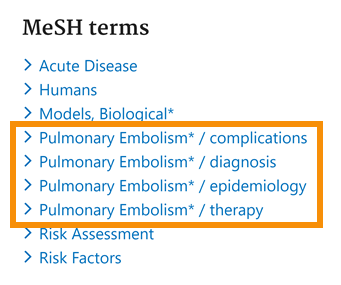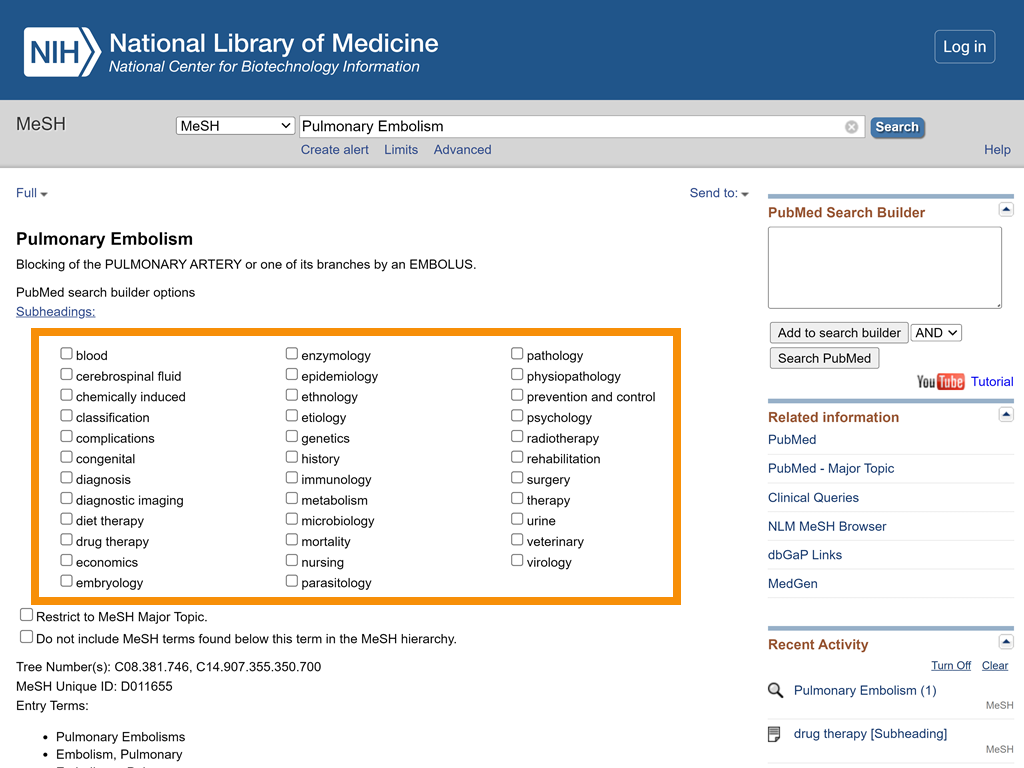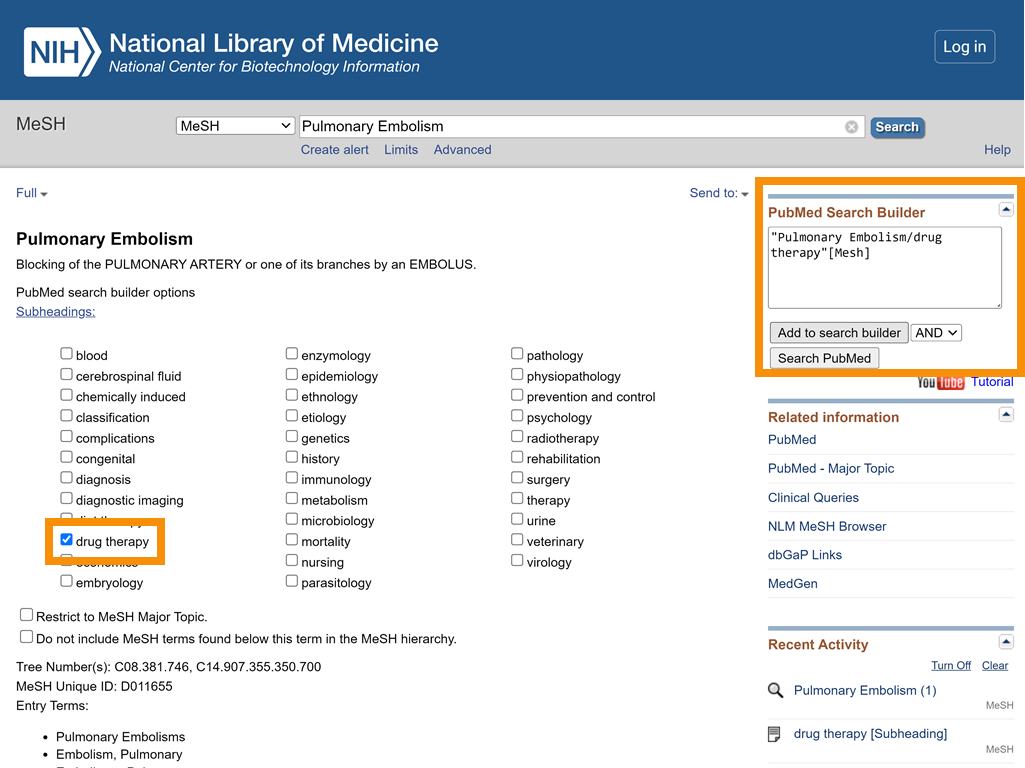How Can I Use MeSH to Narrow My Search Results?
Subheadings
Subheadings (also called qualifiers) are used in combination with MeSH Headings to indicate that an article focuses on a specific aspect of a topic. For example, searching PubMed with pulmonary embolism/drug therapy will retrieve articles about drug therapies for pulmonary embolism. Pulmonary Embolism is the MeSH Heading and Drug Therapy is the Subheading.
There are 78 Subheadings in MeSH. Like MeSH Headings, Subheadings are arranged hierarchically and will explode to include narrower terms. For example, this is the Subheading Pharmacology in the MeSH hierarchy with its narrower terms:
Pharmacology Administration & dosage Adverse effects Poisoning
ToxicityAgonists Antagonists & inhibitors Pharmacokinetics
Subheadings have scope notes, which can be viewed in the MeSH Database or on the MeSH Qualifiers with Scope Notes page. This is the scope note for drug therapy [Subheading], as found in the MeSH Database:
If a citation is indexed with MeSH Headings that have attached Subheadings, it looks like this image in PubMed.
You can see in this list that a MeSH Heading can have one subheading attached to it at a time, which is why the MeSH Heading Pulmonary Embolism is repeated with different attached Subheadings, like complications, diagnosis, epidemiology, and therapy.
Additionally, not all Subheadings can be attached to all MeSH Headings. For example, the Subheading therapeutic use can be applied to drugs or other treatments, but it cannot be applied to a specific disease or condition. On the other hand, the subheading drug therapy can be used with disease headings but not with drug and chemical terms. For details about how Subheadings can be used, review their definitions on the MeSH Qualifiers with Scope Notes page.
To see which Subheadings could be attached to a MeSH Heading, locate the MeSH Heading in the MeSH Database. A list of available Subheadings will appear towards the top of the record. Here is an example for Pulmonary Embolism[MeSH]:



